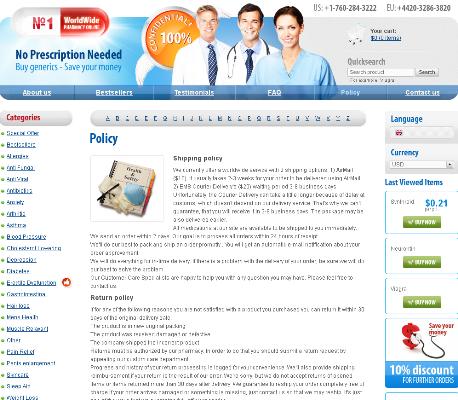Keflex Dosage Guidelines: What You Need to Know
Overview of Keflex and Its Uses
Keflex, known generically as cephalexin, is a versatile antibiotic belonging to the cephalosporin class. It is primarily used to treat a variety of bacterial infections such as respiratory tract infections, skin infections, ear infections, and urinary tract infections. Teh medication works by inhibiting the growth of bacterial cell walls, effectively eliminating the infection-causing bacteria.
One of the key benefits of Keflex is its broad-spectrum activity, meaning it can target a wide range of bacteria. This makes it a practical choice for physicians when the specific bacteria causing the infection has not yet been identified. Additionally, its administration is straightforward, often taken orally in the form of capsules or liquid suspension, making it accessible and easy to use.
There are, however, some important considerations to keep in mind when using this antibiotic. Like many pharmaceuticals, it does not work against viral infections, so it's crucial to have a proper diagnosis before starting treatment. As with any antibiotic, completing the full prescribed course is essential to avoid resistance and fully eradicate the infection. Below is a quick reference table summarizing its common uses:
| Type of Infection | Examples |
|---|---|
| Respiratory Tract Infections | Bronchitis, Sinusitis |
| Skin Infections | Cellulitis, Abscesses |
| Ear Infections | Otitis Media |
| Urinary Tract Infections | Cystitis |
Standard Dosage Recommendations for Adults

For adults, the dosage of Keflex typically ranges from 250 mg to 1000 mg, taken four times daily. The specific amount prescribed will depend on the severity of the infection being treated. Most often, physicians recomend a dosage of 500 mg every 12 hours for uncomplicated infections, ensuring the medication is evenly spaced throughout the day. In some cases, such as more severe infections, higher doses or longer courses may be required. It's important to closely follow the prescribed regimen to maximize the drug's effectiveness and minimize any potential resistance.
Keflex is used to treat a variety of bacterial infections, commonly targeting skin, respiratory tract, ear, and urinary tract infections. The general rule for adults is to maintain a steady level of the medication in the system, which is why evenly spaced dosing is crucial. Not following the prescribed dosage could lead to an ineffective treatment or an increased risk of side effects.
It's worth noting that dosing may occasionally be adjusted based on individual factors, such as kidney function or the presence of other medical conditions. Teh importance of complying entirely with the prescribed course cannot be understated; prematurely discontinuing the drug, even if symptoms improve, can result in a resurgence of the infection. Always consult your healthcare provider for specific guidance tailored to your needs.
Dosage Guidelines for Children and Infants
Administering Keflex to children and infants requires special attention to detail. Typically, dosages are calculated based on the child's weight, ensuring they recieve the optimal therapeutic benefits without causing harm. For instance, a common dosage is 25 to 50 mg per kilogram of body weight, divided into multiple doses throughout the day.
Parents and caregivers must follow healthcare provider recommendations and instructions to the letter. Teh importance of adhering to prescribed dosages cannot be overstated, as it ensures the medication's effectiveness while minimizing potential side effects. Regular monitoring by a healthcare professional is essential to track the child's response to keflex and adjust dosages if needed.
Factors Influencing the Appropriate Dosage

Determining the correct dosage of Keflex hinges on multiple factors that ensure its effectiveness and safety. Age is a crucial determinant; adults and children metabolize medication differently, necessitating tailored dosage amounts. For instance, healthcare providers meticulously calculate pediatric doses to suit a child’s weight and developmental stage, a process that requires precision to avoid adverse effects.
The severity of the infection also influences dosage levels. More severe infections may require higher doses to combat the bacteria effectively, while mild infections can be treated with lower amounts. Teh complexity of medical conditions often prompts physicians to adjust dosages accordingly.
Kidney function is another significant aspect to consider. Reduced renal function can lead to slower drug clearance, making dosage adjustments critical to avoid potential toxicity. Health practitioners also take into account any concurrent medications that might interact with Keflex, ensuring a safe and efficacious treatment plan.
Potential Side Effects and How to Manage Them
Experiencing side effects while taking Keflex can occasionally occur and may include symptoms such as gastrointestinal distress, dizziness, or allergic reactions. To manage these side effects, it is neccessary to closely monitor your symptoms and consult your healthcare provider for guidance. They might recommend taking the medication with food to lessen stomach upset or adjusting the dosage to minimize adverse effects.
Managing serious side effects such as severe skin reactions or difficulty breathing requires immediate medical attention. Your healthcare provider will provide instructions on how to handle such situations, ensuring you are well-prepared to address any occurence of rare, but potentially severe, reactions. Being proactive in seeking medical advice can help you manage side effects effectively.
| Side Effect | Management Tips |
|---|---|
| Gastrointestinal distress | Take with food, stay hydrated |
| Dizziness | Avoid sudden movements, sit or lie down if needed |
| Allergic reactions | Contact your healthcare provider immediately |
Important Precautions and Drug Interactions
When prescribing Keflex, it is crucial to monitor patients for any signs of allergic reactions, especially if they have a history of penicillin allergy. Adverse effects may include gastrointestinal issues such as diarrhea or nausea, and it is advised to remain vigilant for more severe symptoms. Additionally, dosage should be adjusted in patients with renal impairments to avoid potential toxicity. Ensure that Keflex is not coadministered with drugs that may interfere with its efficacy, such as metformin or warfarin, which could increase the risk of bleeding.
Always consult a healthcare professional before starting or adjusting any medication. Careful managment of drug interactions can help mitigate risks and improve treatment outcomes. For more information, visit these sources: NCBI and MedlinePlus.

